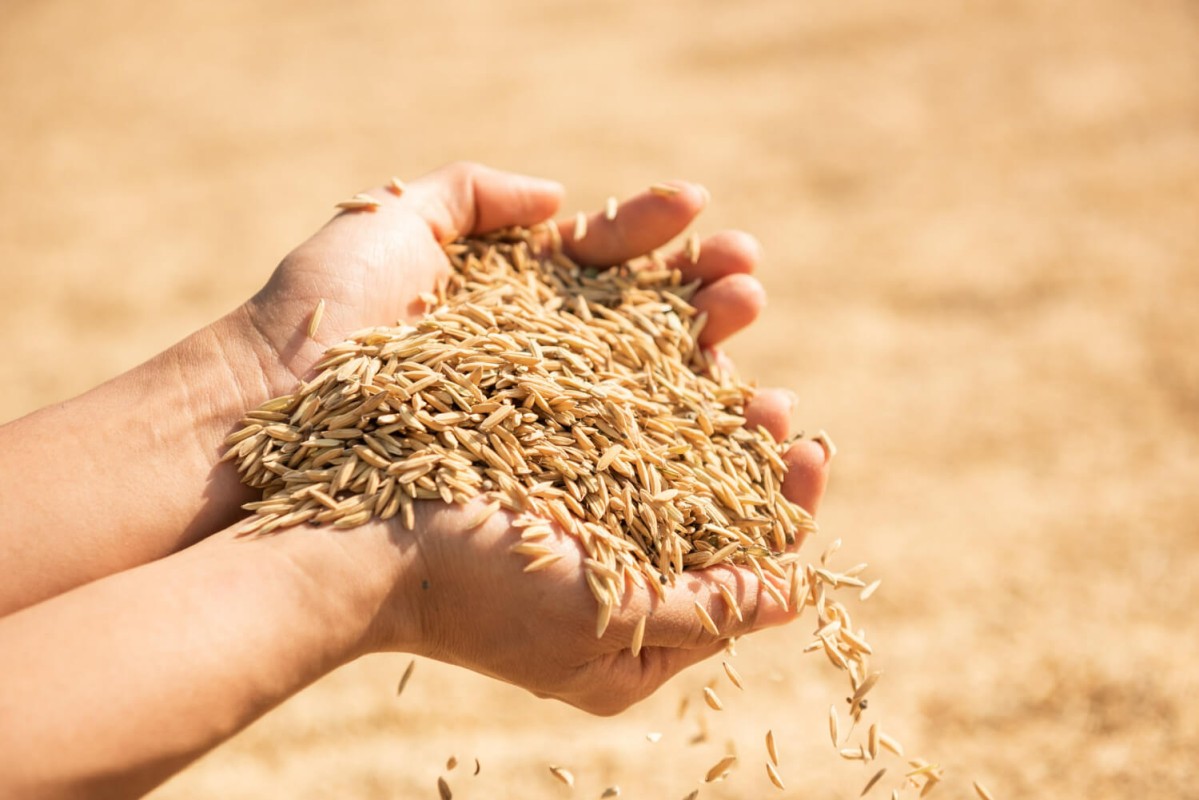
Basmati rice is known worldwide for its distinct aroma and flavor. The cultivation of Basmati rice has been practiced in India for centuries, and India and Pakistan are considered the birthplaces of Basmati rice. Scientists are developing new and improved varieties of Basmati rice to increase production and enhance farmers' income. In this regard, with the support of the Bhabha Atomic Research Centre in Mumbai, Indira Gandhi Agricultural University has developed aromatic and advanced varieties of Basmati rice through mutation breeding. These rice varieties are mutant strains that provide better yields compared to regular varieties and have a reduced likelihood of pest and disease infestations, reducing the need for pesticides.
Crops Are Vulnerable to Weather Fluctuations:
The aromatic Basmati rice varieties have longer plant height and take a longer time to mature. Due to this, these crops are susceptible to damage from changing weather conditions before the harvest time arrives. To protect farmers from losses due to such weather fluctuations, mutant varieties are developed. These mutant seeds are being prepared through mutation breeding with the help of the Bhabha Atomic Research Centre in Mumbai.
Characteristics and Benefits of These Rice Varieties:
1. The use of mutant varieties of rice, especially aromatic Basmati rice, leads to increased production.
2. These mutant varieties outperform other rice varieties in terms of quality.
3. The likelihood of pest and disease infestations is reduced in these varieties, although treating the seeds before sowing is still necessary.
4. Efforts are being made to reduce the growth duration and height of traditional aromatic Basmati rice, while increasing the yield.
Specific Basmati Varieties:
Pusa Basmati-6 (Pusa-1401):
This variety is suitable for cultivation in all regions where Basmati rice is grown and under irrigated conditions. It's a medium-duration variety that doesn't shatter upon ripening. It is resistant to strong winds and storms. Each grain from this variety is of uniform size. It has excellent aroma and contains less than 4% broken grains. The production capacity of this variety ranges from 55 to 60 quintals per hectare.
Improved Pusa Basmati-1 (Pusa-1460):
This variety is suitable for cultivation in all regions where Basmati rice is grown and under irrigated conditions. It is a high-yield variety. This variety is resistant to bacterial blight. It matures in 135 days. The production capacity of this variety ranges from 50 to 55 quintals per hectare.
Pusa Basmati-1121:
Like the two mutant varieties mentioned earlier, Pusa Basmati-1121 is also sown. This aromatic Basmati rice matures in 140 to 145 days. Its grains are long (8.0 millimeters) and slender. The production capacity is 40 to 45 quintals per hectare.
Pusa Sugandh-5 (Pusa-2511):
This variety is suitable for cultivation in Punjab, Haryana, Delhi, western Uttar Pradesh, and Jammu and Kashmir, as well as under irrigated conditions. It has long grains. It is resistant to brown spot disease. This variety matures in 125 days, and it yields 60 to 70 quintals per hectare. Additionally, Pusa Sugandh-3 and Pusa Sugandh-2 are similar to this variety.
These mutant Basmati rice varieties are developed to address various agricultural challenges and enhance the overall quality and yield of Basmati rice crops.